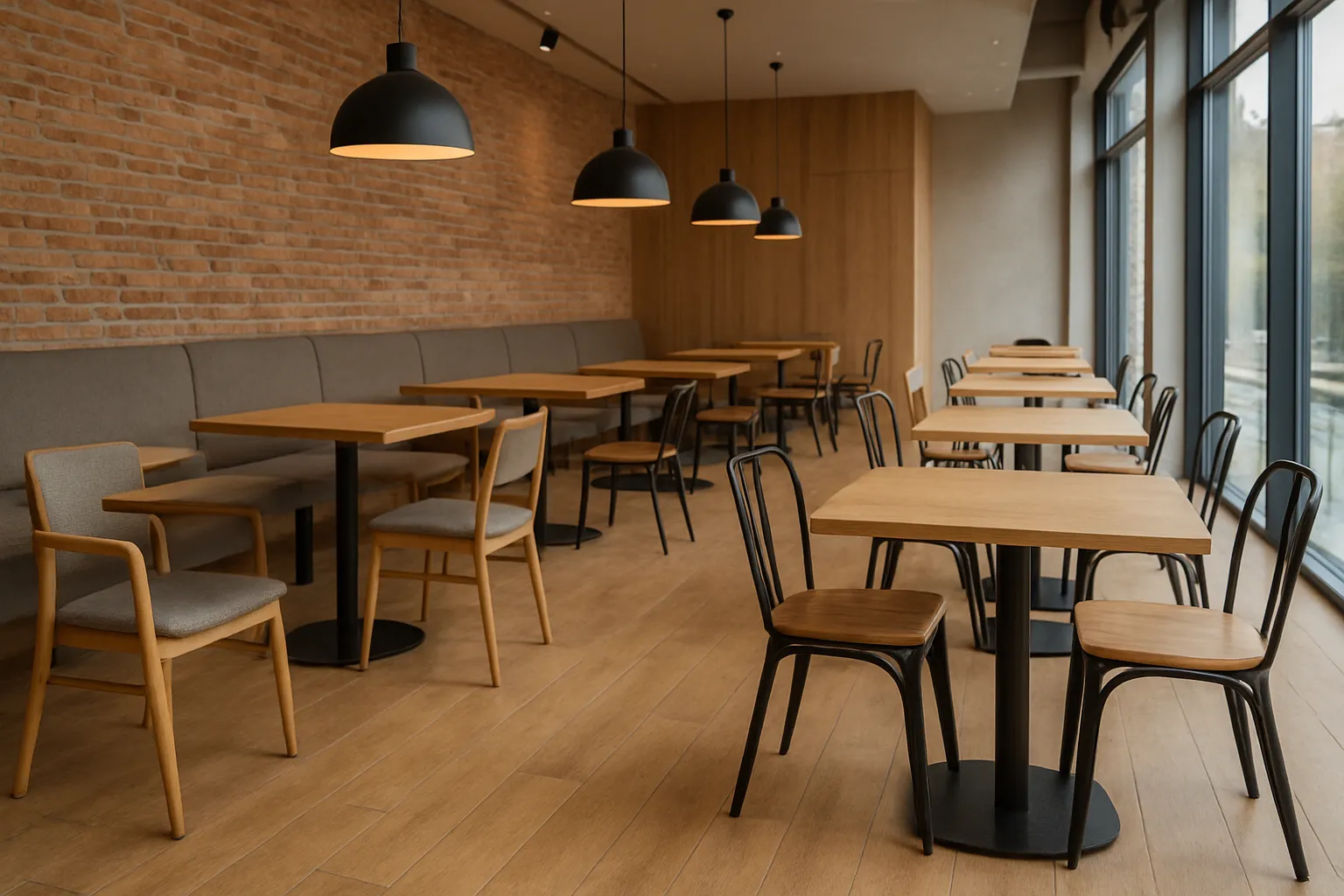Choosing the right seating for a restaurant is one of the most important decisions an owner can make. Chairs are not just functional; they set the tone for the entire dining experience. The choice between steel and wooden chairs is a classic debate, especially for restaurants and cafés looking to balance durability, style, and cost-effectiveness. With the growing popularity of wholesale purchasing, many owners wonder if steel options truly outperform wooden ones in long-term value. Having worked with both materials across different dining spaces, I’ll share some firsthand insights to help you make a well-informed decision.
Why Steel Chairs Appeal to Restaurants
Steel chairs have become a staple in many restaurants because of their resilience. In high-traffic dining spaces, chairs face daily wear and tear from constant use, shifting, and stacking. Steel tends to outperform wood in terms of structural strength and long-term endurance. Owners who purchase through restaurant chairs wholesale often choose steel models because they handle frequent use without loosening joints or suffering major damage. From casual dining spots to banquet halls, steel’s reliability makes it a practical choice when margins are tight, and longevity matters.
That being said, it’s not just about toughness. Steel chairs can be designed in sleek, modern styles that align with contemporary interiors. With powder-coated finishes, they also resist rust and staining, which is particularly important for outdoor dining or restaurants in humid climates. For restaurants that prioritize function above all, steel chairs offer peace of mind.
The Enduring Charm of Wooden Chairs
Wooden chairs, on the other hand, carry a sense of warmth and authenticity that steel sometimes lacks. They remain a favorite in fine dining and boutique cafés, where ambiance is just as important as comfort. When sourcing cafe chairs wholesale, many owners lean toward wood because it creates an inviting environment that resonates with customers looking for a relaxed or premium experience.
From oak and beech to lighter pine, wood can be finished in countless ways to match a brand’s design identity. Unlike steel, which tends to be uniform in texture, each wooden chair carries subtle uniqueness in its grain and finish. This adds to the charm of a café or restaurant aiming for a personal, handcrafted feel.
Comfort Considerations
When it comes to seating comfort, both steel and wood can be enhanced with upholstered pads, fabric cushions, or ergonomic design adjustments. Wooden chairs, however, often feel warmer to the touch and provide a more natural seating experience. Steel chairs can sometimes feel cold or less inviting, though modern designs with curved backrests and padded seats have closed this gap significantly.
Cost and Value Over Time
Wholesale pricing makes both steel and wooden chairs affordable in bulk, but the value equation depends on your business model. Steel chairs usually cost less upfront and last longer under constant use, making them ideal for fast-casual restaurants or cafeterias. Wooden chairs may require more maintenance and occasional refinishing, but their timeless look can justify the investment in restaurants where customer perception is closely tied to design. For owners planning to frequently update their interior look, wooden chairs also provide more versatility in style shifts.
Sustainability and Brand Image
In today’s market, sustainability plays a growing role in decision-making. Many restaurants opt for responsibly sourced wooden chairs to showcase eco-conscious values. Steel, while recyclable, is more energy-intensive to produce, but it offers a longer lifecycle, reducing the need for replacements. For brands wanting to highlight a green philosophy, wood often aligns better with their identity, while steel appeals to those emphasizing efficiency and modernity.
Final Thoughts: Steel vs. Wood
So, are steel restaurant chairs wholesale better than wood? The answer depends on your restaurant’s priorities. If your space demands heavy use, easy maintenance, and long-term durability, steel chairs are the smarter investment. If ambiance, warmth, and a classic aesthetic matter most, wooden chairs are hard to beat. Both have their place in the hospitality world, and the best decision comes down to balancing budget, style, and customer experience.
For many successful owners I’ve worked with, the ideal solution has been a mix—steel chairs in high-traffic dining zones and wooden chairs in quieter or premium areas. This combination allows you to harness the strengths of both materials while keeping your customers comfortable and your space visually appealing.






